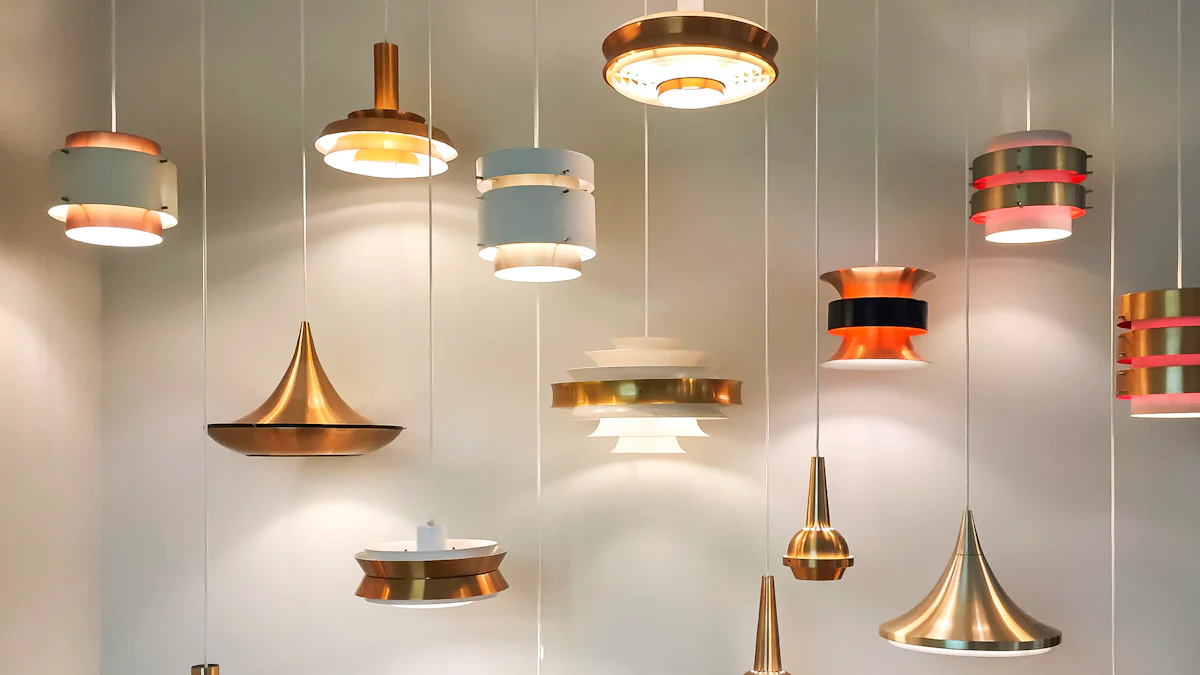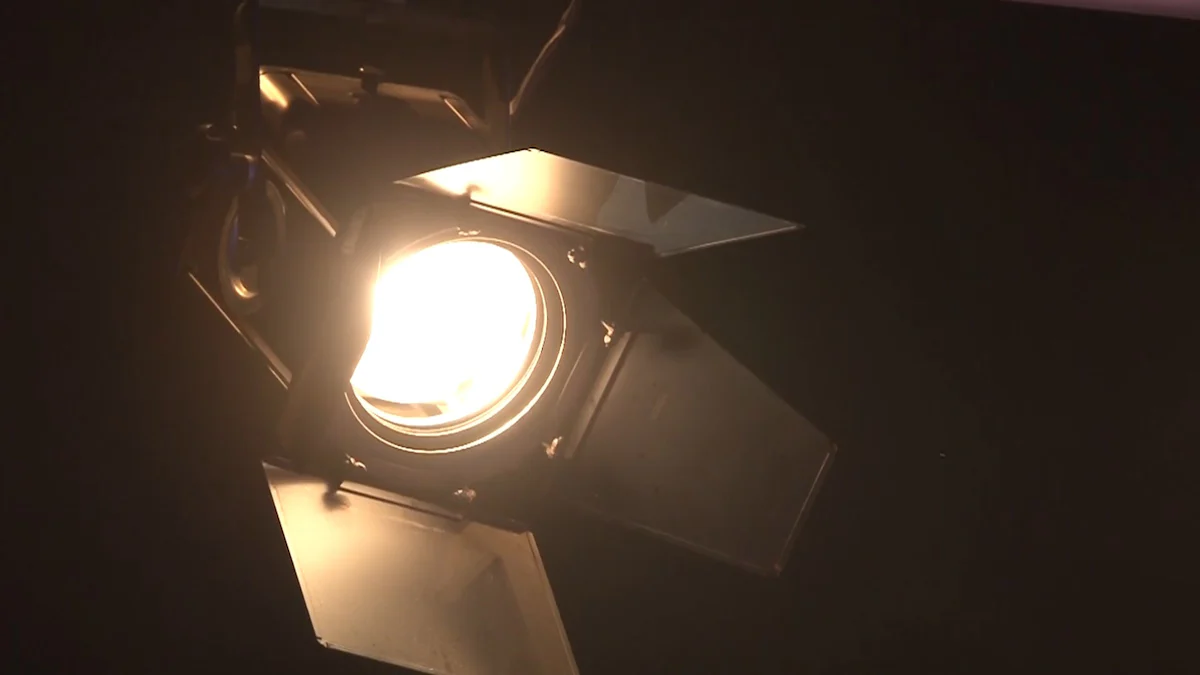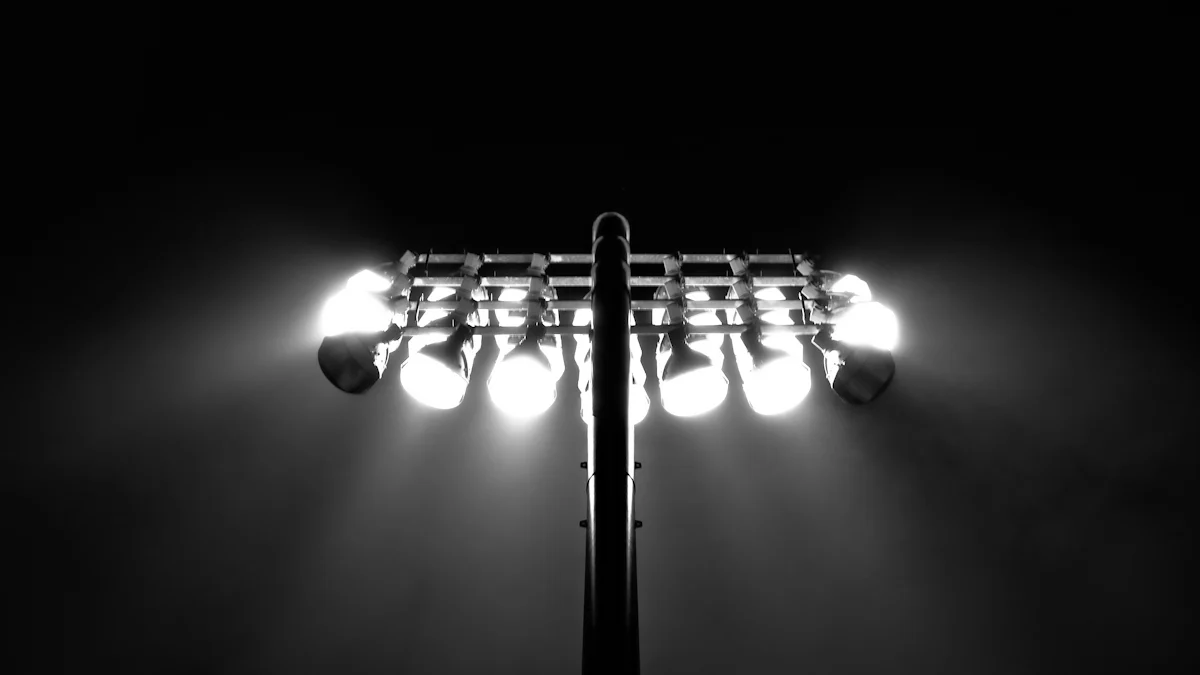
Proper lighting plays a crucial role in various settings, impacting safety, productivity, and well-being. For instance, research shows that lighting accounts for about 40% of the total energy cost in schools. Choosing the right lighting solution can optimize energy efficiency and reduce costs.
Spotlight vs floodlight options often come up when selecting lighting solutions. Spotlights provide a focused beam, while floodlights offer broader illumination. This blog aims to guide readers in choosing between an LED spotlight and an LED floodlight based on specific needs and applications.
Understanding Spotlights

Characteristics of Spotlights
Beam Angle
Spotlights feature a narrow beam angle, typically no wider than 45 degrees. This focused beam allows for precise illumination of specific areas or objects. The concentrated light ensures that the brightest point remains significantly more intense compared to other types of lighting.
Light Intensity
The light intensity of spotlights is notably high due to their concentrated beams. This high intensity makes them ideal for highlighting particular features such as artwork, sculptures, or architectural details. The directed light can reach considerable distances, providing clear visibility of distant objects or areas.
Energy Efficiency
LED spotlights offer excellent energy efficiency. These lights consume less power while delivering high brightness levels. The use of LED technology in spotlights not only reduces energy consumption but also extends the lifespan of the lighting fixtures, making them a cost-effective choice.
Applications of Spotlights
Indoor Uses
Spotlights are commonly used indoors to accentuate specific features. Homeowners often use them to highlight artwork, photographs, or decorative elements. In commercial settings, spotlights can illuminate product displays, creating an attractive and engaging environment for customers.
Outdoor Uses
Outdoors, spotlights serve various purposes. They can highlight landscape features such as trees, statues, or water fountains. Additionally, spotlights provide targeted lighting for pathways, driveways, and building facades, enhancing both aesthetics and security.
Advantages and Disadvantages of Spotlights
Pros
- Precision Lighting: Spotlights offer precise control over where the light falls, making them perfect for accent lighting.
- High Intensity: The concentrated beam provides intense illumination, ideal for highlighting specific objects or areas.
- Energy Efficiency: LED spotlights consume less power and have a longer lifespan compared to traditional lighting options.
Cons
- Limited Coverage: The narrow beam angle means spotlights cover a smaller area, which may require multiple fixtures for broader illumination.
- Potential Glare: The high intensity of spotlights can cause glare if not positioned correctly, potentially leading to discomfort.
Understanding Floodlights

Characteristics of Floodlights
Beam Angle
Floodlights feature a broad beam angle, typically exceeding 120 degrees. This wide beam spread allows for comprehensive coverage of large areas. The diffused light provides uniform illumination, making floodlights ideal for lighting up expansive spaces.
Light Intensity
The light intensity of floodlights is designed to enhance overall visibility. These lights emit a softer, more diffused light compared to spotlights. This characteristic makes floodlights suitable for creating safe environments by improving peripheral vision and reducing harsh shadows.
Energy Efficiency
LED floodlights offer exceptional energy efficiency. These lights consume less power while providing extensive illumination. The use of LED technology in floodlights not only reduces energy consumption but also extends the lifespan of the lighting fixtures, ensuring a cost-effective solution for large-scale lighting needs.
Applications of Floodlights
Indoor Uses
Indoors, floodlights serve various purposes. They can illuminate large spaces such as warehouses, gymnasiums, and auditoriums. The broad beam angle ensures that every corner of the room receives adequate light, enhancing safety and functionality.
Outdoor Uses
Outdoors, floodlights are commonly used to light up large areas such as parking lots, sports fields, and building exteriors. The wide beam spread provides comprehensive coverage, making floodlights ideal for security lighting. They help deter intruders and ensure visibility in dark areas.
Advantages and Disadvantages of Floodlights
Pros
- Wide Coverage: Floodlights provide extensive illumination, covering large areas effectively.
- Uniform Lighting: The diffused light ensures even distribution, reducing shadows and enhancing visibility.
- Energy Efficiency: LED floodlights consume less power and have a longer lifespan compared to traditional lighting options.
Cons
- Lower Intensity: The diffused light of floodlights may not be suitable for highlighting specific objects or areas.
- Potential Light Pollution: The broad beam angle can cause light spillage, potentially leading to light pollution in surrounding areas.
Comparing Spotlights and Floodlights
Key Differences
Beam Spread
Spotlights feature a narrow beam spread, typically no wider than 45 degrees. This focused beam allows for precise illumination of specific areas or objects. In contrast, floodlights have a broad beam spread, often exceeding 120 degrees. This wide beam ensures comprehensive coverage of large areas.
Light Coverage
Spotlights provide intense, concentrated light over a small area. This makes them ideal for accent lighting and highlighting specific features. Floodlights, however, offer uniform brightness over a larger area. This makes them suitable for general lighting purposes in expansive spaces.
Energy Consumption
Both spotlights and floodlights can be energy-efficient when using LED technology. LED spotlights consume less power while delivering high-intensity light. LED floodlights also use less energy but cover a broader area with diffused light. The choice between the two depends on the specific lighting needs and the area to be illuminated.
Choosing the Right Light for Your Needs
Consider Your Space
The type of space plays a crucial role in choosing between a spotlight and a floodlight. For small, specific areas that need focused light, a spotlight is ideal. For larger areas requiring broad illumination, a floodlight is more suitable.
Purpose of Lighting
The purpose of lighting determines the choice between a spotlight and a floodlight. Use a spotlight for tasks like highlighting artwork, architectural details, or specific landscape features. Opt for a floodlight to illuminate parking lots, sports fields, or building exteriors.
Budget Considerations
Budget constraints also influence the decision. LED spotlights and LED floodlights both offer energy efficiency and long lifespans. However, the number of fixtures needed may vary. Multiple spotlights might be required for broader coverage, potentially increasing costs. A single floodlight could suffice for large areas, offering a cost-effective solution.
Additional Considerations
Product Examples
Popular Spotlight Models
- Lhotse LED Headlamp: This model offers high-intensity illumination, ideal for hiking and camping. The adjustable beam angle provides versatility in various settings.
- Lhotse 3-in-1 Camping Fan Light: This product combines a spotlight with a fan and remote control. It serves multiple functions, making it perfect for outdoor adventures.
- Lhotse Cordless Portable LED Work Light: This spotlight is designed for outdoor projects. The portable design ensures easy mobility and effective lighting.
Popular Floodlight Models
- Lhotse Waterproof Outdoor Garden LED Solar Lights: These floodlights provide wide coverage and are powered by solar energy. The waterproof design makes them suitable for garden and outdoor use.
- Lhotse Double Head Floodlights: This model features two adjustable heads, offering extensive illumination for large areas. The LED technology ensures energy efficiency.
- Lhotse Three-Leaf LED Work Lights: These floodlights offer a broad beam spread, making them ideal for illuminating expansive spaces. The three-leaf design enhances light distribution.
FAQs
Common Questions About Spotlights
Q: What is the typical beam angle of a spotlight?
A: Spotlights usually have a beam angle no wider than 45 degrees. This narrow beam allows for focused illumination.
Q: Are LED spotlights energy-efficient?
A: Yes, LED spotlights consume less power while delivering high brightness levels. This makes them an energy-efficient choice.
Q: Can spotlights be used outdoors?
A: Yes, spotlights can highlight landscape features and provide targeted lighting for pathways and building facades.
Common Questions About Floodlights
Q: What is the beam angle of a floodlight?
A: Floodlights typically have a beam angle exceeding 120 degrees. This wide beam ensures comprehensive coverage of large areas.
Q: Are LED floodlights suitable for security lighting?
A: Yes, LED floodlights provide extensive illumination, making them ideal for security purposes. They help deter intruders and ensure visibility in dark areas.
Q: Can floodlights cause light pollution?
A: The broad beam angle of floodlights can cause light spillage, potentially leading to light pollution in surrounding areas.
Related Cases
Case Study 1
A local art gallery needed precise lighting to highlight specific artworks. The gallery chose Lhotse LED Headlamps for their high-intensity and adjustable beam angles. The spotlights enhanced the visual appeal of the artworks, drawing visitors’ attention to intricate details.
Case Study 2
A sports complex required extensive lighting for its outdoor fields. The management selected Lhotse Double Head Floodlights for their wide coverage and energy efficiency. The floodlights provided uniform illumination, ensuring safe and enjoyable night-time activities for athletes and spectators.
Recapping the key points, spotlights offer focused, high-intensity lighting ideal for accentuating specific features. Floodlights provide broad, uniform illumination suitable for large areas.
When choosing between spotlights and floodlights, consider the space and purpose of the lighting. Spotlights enhance safety and aesthetics by guiding visitors and highlighting garden features. Floodlights create a welcoming ambiance and ensure security in expansive areas.
Evaluate individual needs and preferences to make an informed decision. Proper lighting enhances both functionality and visual appeal, making any space more enjoyable and safe.
Post time: Jul-09-2024
